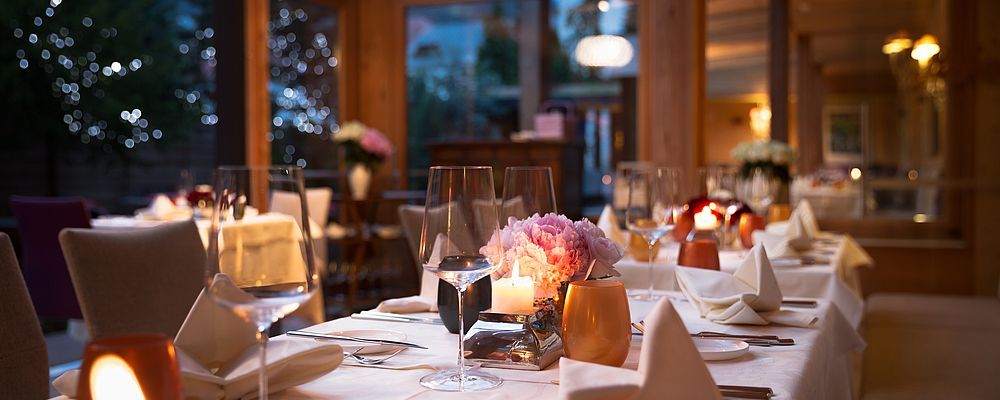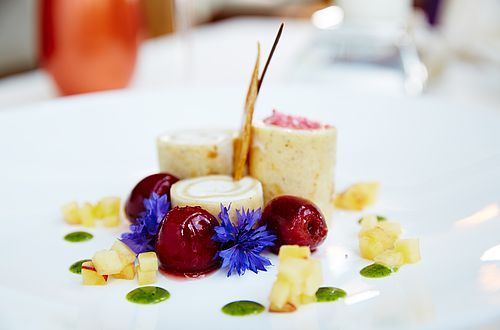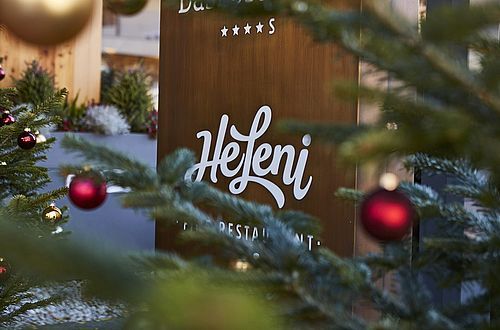Sommelier Talk
The Pleasure is all Wine
Good cooks often wonder: which wine do I serve with the meal…Red or White? This is followed by more questions when the special Christmas menu is being planned. What pairs well with aromatic spices? Can I pour whites in winter? And what the heck is a Smaragd? ZillerSeasons wine sommelier, Bettina Lederer answers these questions – and more.
Perhaps the biggest gift we can share during the holidays is enjoyment. It’s a time to appreciate the treats and traditions that accompany Christmas. We gather around the table and revel in these moments together. And of course, we enjoy exquisite wines that accompany such occasions. Christmas delicacies demand big wines that can stand up to their strong flavors. Typically, intense spices like cloves, vanilla, cinnamon and orange zest play a grand role this time of year, along with rich dishes like venison, beef, hearty soups, chestnuts and gingerbreads. Austrian wines salute these beloved classics.
First Up: Starter Course
I always serve white wine with the first course whether the dish is hot or cold. You might think white wine is reserved for summer parties. And you’d be right! However, the varieties Grüner Veltliner and Riesling (typically fresh and fruity when young) are well-suited to winter appetizers when they have Smaragd on the wine label. This means the bottle is a later-harvest, top tier wine in the classification system, named after a special emerald-green Lizard who lives in the vineyards of the Wachau region. In essence, these Smaragd-style whites are more flavorful and riper reminding us of apple, pear and honey melon. Also suited to appetizers are Chardonnay, Pinot Grigio and Pinot Blanc. These barrel-aged wines pair well with warm dishes like porcini mushroom pasta, truffle risotto and pumpkin ravioli.
Wines aged in wooden barrels take on the flavors and characteristics of the oak itself, lending notes of clove, vanilla and caramel. The caramel flavor comes from the natural sugars that get charred when you “toast” the barrel wood. What gives wine its special character is the age of the barrel itself and length of time it ages inside.
Center Stage: Main Course
In the winter, we tend to go for big reds that are warming. For this heating effect, I recommend varieties from the province of Burgenland, the warmest region in Austria with the most hours of sunshine. My personal favorites: Blaufränkisch (Blue Frankish) is a native grape and the ideal accompaniment to beef with pepper sauce. Cabernet Sauvignon is a grape that complements venison and cranberries. Wonderful with lamb and polenta is a full-bodied Syrah with its herbal notes. There are also fruity Cuvées (blended wines with Zweigelt, Cabernet and Merlot) that also pair well with red meats. Should fish be served, I would fill the stemware with Riesling (of the Smaragd quality) because as the saying goes, “fish and Riesling are a match made in heaven.” The Wagram wine region in Lower Austria is a hidden gem for Austrian white wines, because it has a warmer micro-climate, which gives the wine additional character and flavor.
The Crowning Finish: After Dinner
Let’s go with white: the perfect choice for dessert. Preferably in the quality level known as Auslese (selection) or a Trockenbeerenauslese (dry berry selection). These grapes were picked later in the harvest and therefore have intense aromas and rich flavors. An Austrian Welschriesling is a good choice or a Gewürztraminer which reminds us of raspberries, roses and mango! Another optimal finish to a meal is Eiswein, harvested in winter when the grapes are frozen and pressed immediately. Sweet and tart at the same time, it’s like frozen silk on the tongue. When the cheese course is served, the tradition has been to pour red wines, but this doesn’t always harmonize due to the tannins clashing with the cheese. It is now popular to pour late harvest white wines as the better companion. The logic is simple: salty (cheese) pairs well with sweet (wines).
Sure, Austrians drink a lot of beer. But not only. Austria is also a country flowing with great wines. With many award-winning estates, Austria rightly claims a seat at the head table with varietals like the racy (white) Grüner Veltliner and the earthy (red) Blauer Zweigelt. Some are exported but the best bottles are enjoyed right here in the homeland. This means you need to come to Austria to taste and explore the alternative to beer.
The flavor explosion that results in combining certain foods and drinks has always fascinated this hotel and hospitality expert. As Heleni restaurant manager and trained sommelier, Bettina has a special knack for learning our guests wine preference and pairing that desire with their meals. She wants every ZillerSeasons guest to experience a flavor explosion.



